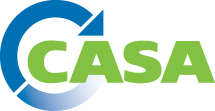EPA Seeking Information on Domestic Supply Chain for Water Sector
The U.S. Environmental Protection Agency (USEPA) announced that is seeking information on products used in water infrastructure projects that are subject to Build America, Buy America (BABA) mandates. The purpose of the Request for Information (RFI) by the Agency is to enhance the USEPA’s understanding of the domestic supply chain network for critical water infrastructure products used in wastewater water, drinking water, stormwater, and agriculture delivery and treatment systems. As USEPA Office of Water Assistant Administrator Radhika Fox explained in the Agency’s press release, this “will accelerate Federal efforts to expand domestic supply chains for products used in water infrastructure projects by better understanding market trends and product availability, ensuring these crucial projects are delivered on time and on budget.” On November 21, USEPA will host a public webinar on the RFI. Registration is required and can be accessed through the Agency’s event registration form.
Specifically, the RFI will solicit information about the domestic material sourcing, market readiness, product supply considerations, and if specific products used, or their components, in water infrastructure projects are or can be manufactured in the U.S. The deadline to submit public comments is 30 days after the RFI’s publication to the Federal Register. The pre-publication of the RFI can viewed on USEPA’s BABA website. It has yet to be published on the Federal Register. To submit comments, visit the Regulations.gov website: Docket ID Number EPA-HQ-OW-2023-0396.
White House Announces Updates to Cost Analysis Approach
 Last week, the Office of Information and Regulatory Affairs (OIRA) updated its cost analysis approach federal agencies use to determine the economic impacts of pending rulemakings and whether rulemakings’ benefits exceed their costs. The revisions to Circular A-4 cover a range of topics that determine the costs and benefits of federal regulations, including the evaluation of future consequences, distribution of policy’s effects, scope of effects analysis, and best way to account for effects that prove difficult to monetize. Ultimately, this move by the Administration changes the way in which federal rules and program assistance are developed to ensure better regulations that ensure “cleaner food, air, and water; less fraud and exploitation; increased workplace safety; more innovation; and a stronger economy” according to the White House’s announcement.
Last week, the Office of Information and Regulatory Affairs (OIRA) updated its cost analysis approach federal agencies use to determine the economic impacts of pending rulemakings and whether rulemakings’ benefits exceed their costs. The revisions to Circular A-4 cover a range of topics that determine the costs and benefits of federal regulations, including the evaluation of future consequences, distribution of policy’s effects, scope of effects analysis, and best way to account for effects that prove difficult to monetize. Ultimately, this move by the Administration changes the way in which federal rules and program assistance are developed to ensure better regulations that ensure “cleaner food, air, and water; less fraud and exploitation; increased workplace safety; more innovation; and a stronger economy” according to the White House’s announcement.
While the revisions to Circular A-4 are complex, a summary of the key revisions include:
- Target non-monetary/ non-quantifiable benefits of a federal rule or investment(s) to ensure disadvantaged communities needs are met.
- The discount rate, a key economic tool, is to be updated to better calculate the long-term benefits of any rule or federal assistance.
- The new default discount rate will be 2% down from 3%.
- The discount rate will be updated every three years to reflect real economic circumstances.
- Capital and Systemic Risk discount rate of 7% would be eliminated and a 3% rate would be the assumed rate to determine how a regulation would impact investments in the marketplace such as clean energy investments and lower rates would be allowed to address unique needs.
- To consider non-U.S. costs and benefits, the changes seek to impute impacts from regulation of global externalities that could impact national security, like climate change, that would adversely affect U.S. citizens.




 @CASA_CleanWater
@CASA_CleanWater